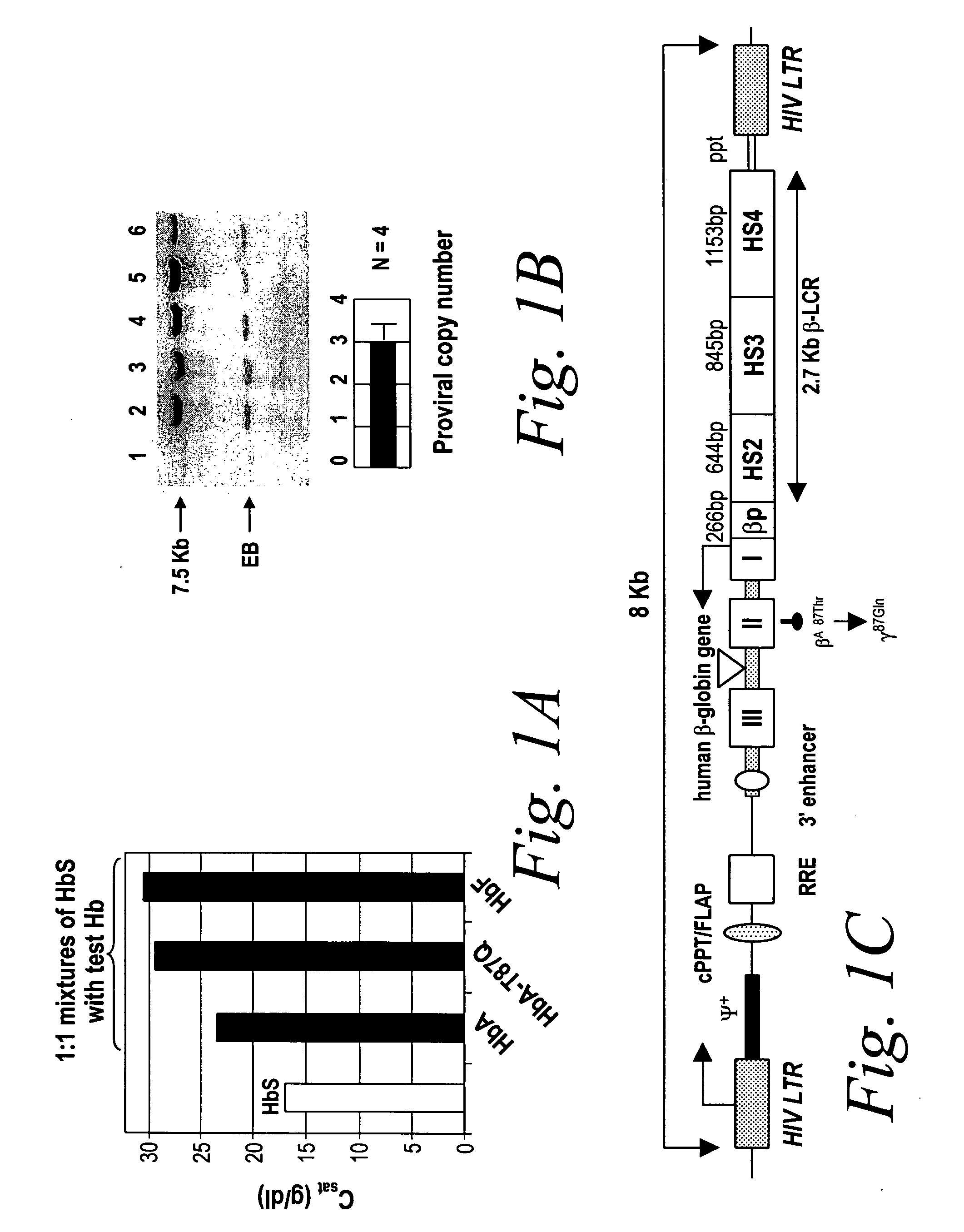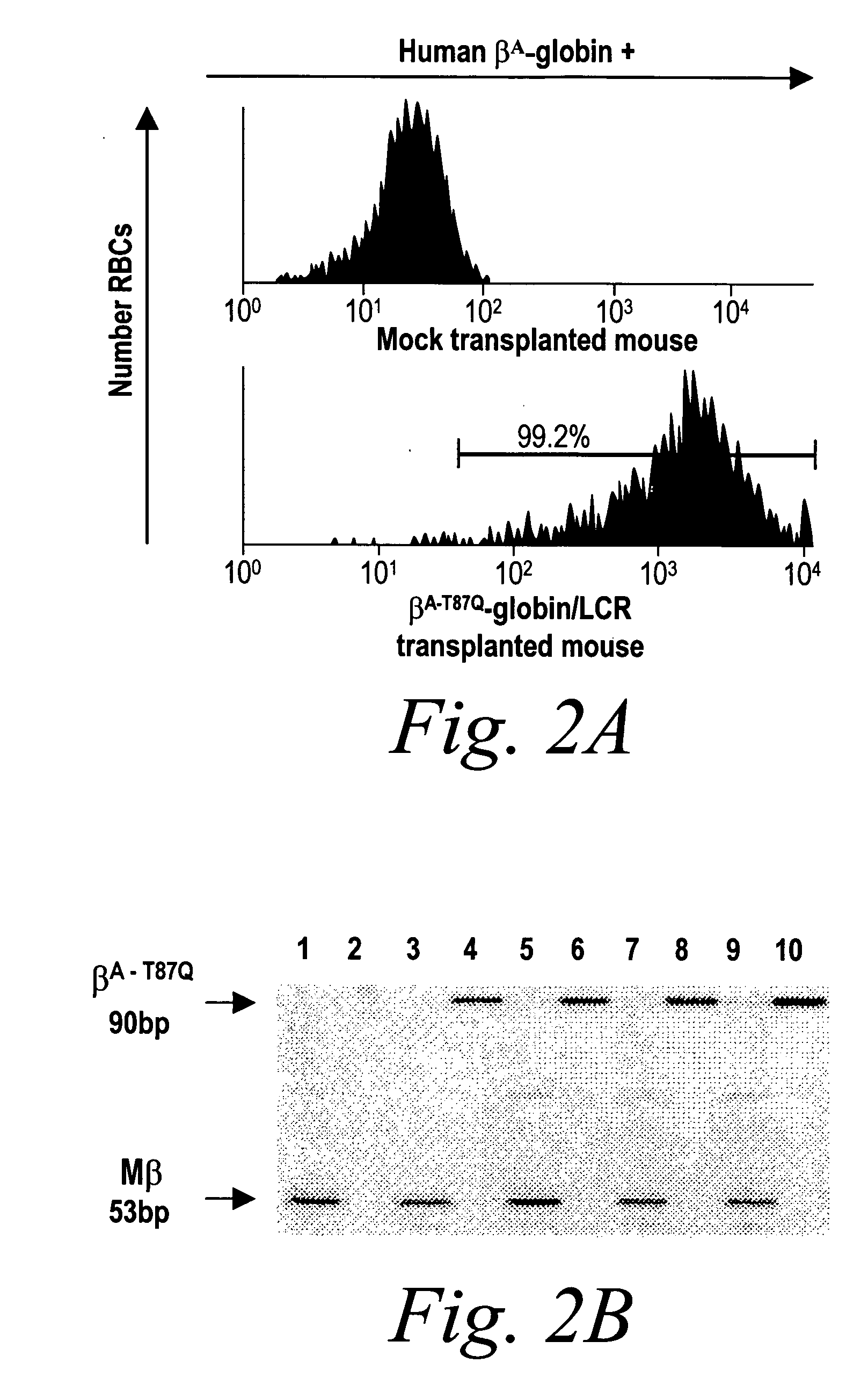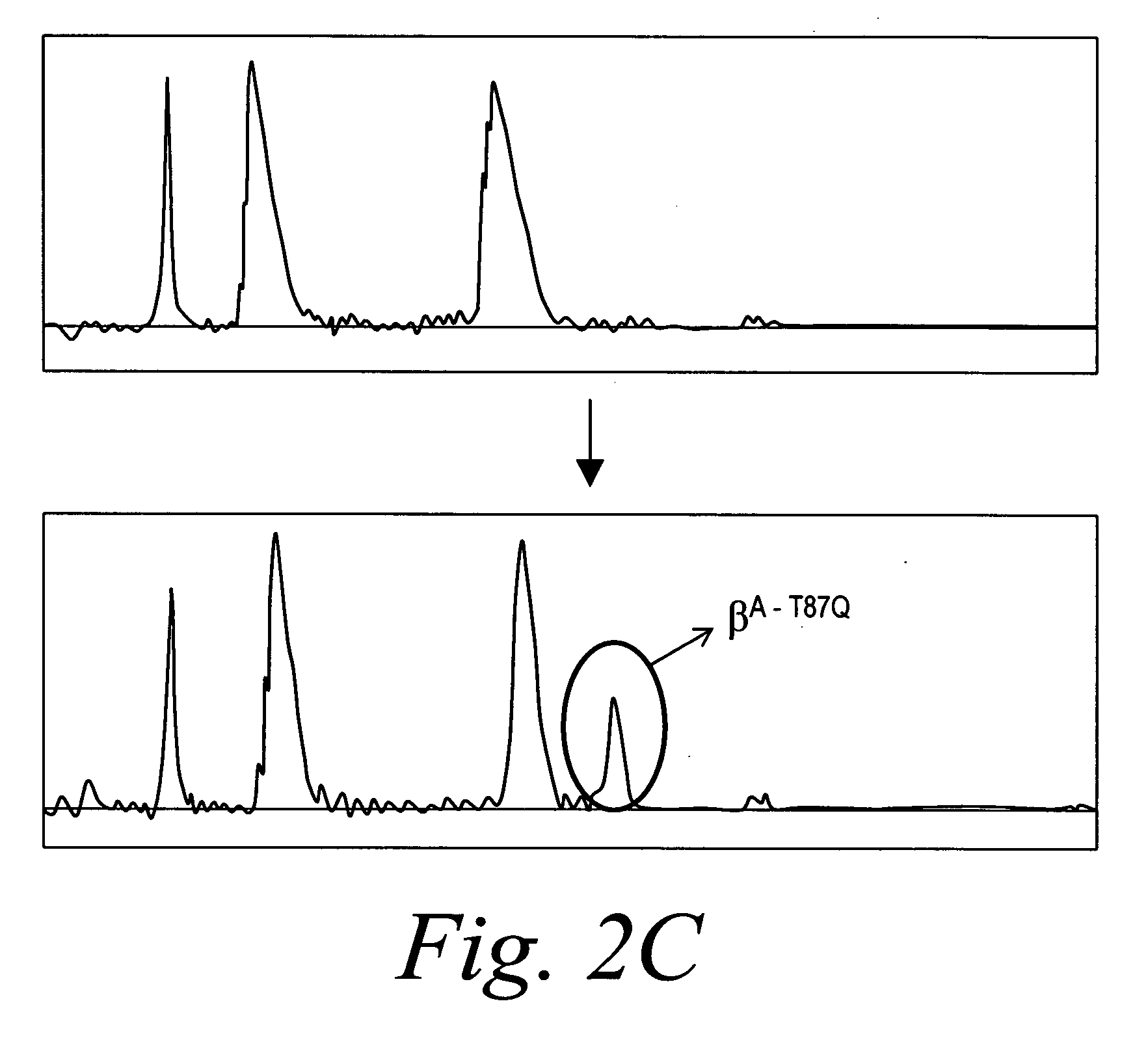Therapeutic retroviral vectors for gene therapy
a gene therapy and therapeutic technology, applied in the direction of viruses, drug compositions, tissue culture, etc., can solve the problems of insufficient complete correction, difficult stable transfer of murine onco-retroviral vectors encompassing minimal core elements of the lcr, and abnormal hemoglobin production by the body,
- Summary
- Abstract
- Description
- Claims
- Application Information
AI Technical Summary
Benefits of technology
Problems solved by technology
Method used
Image
Examples
examples
Materials and Methods
Whole-Blood p50 Analysis
[0103] In the SCD mouse model experiments, p50 measurements on whole blood were performed using a Hemoscan (Aminco, Silver Spring, Md.). The concentration of deoxygenated HbS in equilibrium with the polymer (CSAT) was determined using the p50 method (R. E. Benesch et al. (1978) Analytical Biochem. 89:162) for various mixtures of HbS with test hemoglobins (1:1 ratio). p50 is the oxygen pressure at which half of the molecules of Hb are deoxygenated, as detected spectroscopically. Because the HbS polymer has a much lower oxygen affinity than HbS in solution, a sudden jump in p50 indicates the start of the formation of the polymer, and the concentration of Hb at which the jump occurs gives the CSAT value, expressed in g / dl
Vector Construction and Virus Production
[0104] The human beta-globin gene including its promoter and 3′ enhancer sequence was cloned from BGT9 (Pasceri, et al. (1998) Blood 92:653). A 374 bp fragment was deleted from i...
example i
Construction of Human βA-Globin Gene Variant
[0122] In order to take advantage of the fact that γ-globin is a strong inhibitor of HbS polymerization, the human βA-globin gene was mutated in such a way as to emulate the antisickling activity of γ-globin. A human βA-globin gene variant was mutated at codon 87 to encode a Glutamine [βA87 Thr:Gln (βA-T87Q)], which is thought to be responsible for most of the antisickling activity of γ-globin (Nagel et al. (1979) PNAS USA 767:670).
[0123] In order to study the antisickling capacity and oxygen-binding affinity of the human βA-globin gene variant, transgenic mice were made which expressed both human βA-T87Q- and α-globins, but neither mouse α- nor mouse β-globin. These mice had normal hematological parameters and viability, and the βA-T87Q-globin variant extracted from the RBCs was found to be almost as potent an inhibitor of HbS polymerization as γ-globin in vitro and much more so than βA-globin, as shown in FIG. 1a. FIG. 1a shows that Hb...
example ii
Analysis of βA-T87Q-Globin Lentivirus
[0125] The βA-T87Q-globin lentivirus was first analyzed in lethally irradiated normal syngeneic C57BL / 6 recipient mice in the absence of any selection. Proviral transfer was stable with an average copy number of 3.0±0.5 (SE) per genome of peripheral nucleated blood cells 3 months after transplantation, as shown in FIG. 1b. At 10 months after transplantation, all mice expressing human βA-T87Q-globin protein with up to 99% (mean 96±0.9% (SE)) of their RBCs staining positive with an antibody that specifically recognizes human β-globin, in this case, the βA-T87Q variant (FIG. 2a). No βA-T87Q-globin expression was detected in other blood lineages by antibody staining. Human βA-T87Q-globin protein represented up to 22.5% [mean 16±3.1% (SE)] of endogenous mouse β-chains in recipients of βA-T87Q-globin lentivirus-transduced bone marrow, as determined by high-performance liquid chromatography (HPLC) (FIG. 2c). The fourfold discrepancy between human βA-T8...
PUM
| Property | Measurement | Unit |
|---|---|---|
| temperature | aaaaa | aaaaa |
| pH | aaaaa | aaaaa |
| temperature | aaaaa | aaaaa |
Abstract
Description
Claims
Application Information
 Login to View More
Login to View More - R&D
- Intellectual Property
- Life Sciences
- Materials
- Tech Scout
- Unparalleled Data Quality
- Higher Quality Content
- 60% Fewer Hallucinations
Browse by: Latest US Patents, China's latest patents, Technical Efficacy Thesaurus, Application Domain, Technology Topic, Popular Technical Reports.
© 2025 PatSnap. All rights reserved.Legal|Privacy policy|Modern Slavery Act Transparency Statement|Sitemap|About US| Contact US: help@patsnap.com



